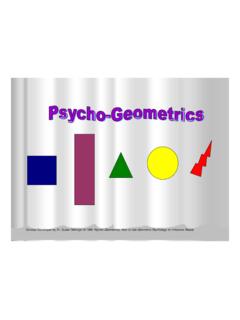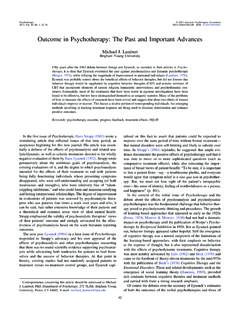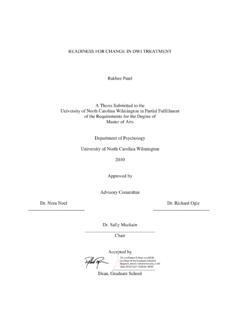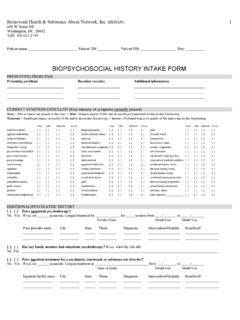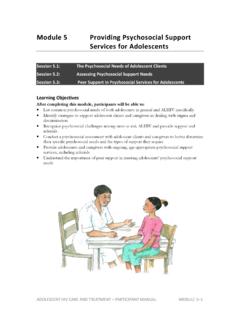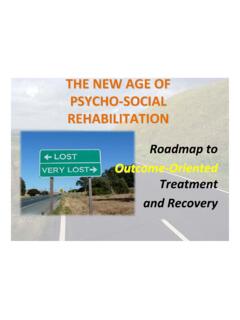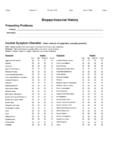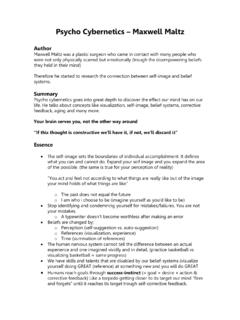Transcription of Biopsychosocial approach to psychological trauma and ...
1 Act Nerv Super Rediviva 2013; 55(4): 185 202 REVIEW ARTICLEA ctivitas Nervosa Superior Rediviva Volume 55 No. 4 2013 Biopsychosocial approach to psychological trauma and possible health consequences Jozef Ha to 1,2,5, Hana Vojtov 3, Radovan Hrub 4, Peter Tavel 51 Psychiatric clinic, Pro mente sana, Tren n/Bratislava, Slovak Republic; 2 University of Health and Social Sciences, Bratislava, Slovak Republic; 3 Psychiatric and psychotherapeutic daily clinic at the University hospital, Tren n, Slovak Republic; 4 Psychiatric Outpatient Clinic, Martin, Slovak Republic; 5 Social Health Institute, Palacky University Olomouc, Czech to: Assoc.
2 Prof. Jozef Ha to, MD., PhD., Psychiatric clinic, Pro mente sana, Pod Brezinou 84, 911 01 Tren n, Slovak Republic. e-mail: from Int J Prenat Perinat Psychol Medicine 2013; 25(3 4): 257 : 2013-08-01 Accepted: 2013-09-11 Published online: 2013-12-28 Key words: psychological trauma ; trauma -related disorders; diagnostics; epidemiology; psychotherapyAct Nerv Super Rediviva 2013; 55(4): 185 202 ANSR550413A06 2013 Act Nerv Super RedivivaAbstractThe diagnostic category of posttraumatic stress disorder (PTSD) has its place in the newest American diagnostic system DSM-V. The authors compare its definition with the former manual DSM-IV and the international classification ICD-10.
3 They reflect difficulties in defining the concept of traumatic event. They summarize epidemiological findings, high-light the possible significant role of traumatogenesis in other psychiatric disorders without PTSD symptoms. The Biopsychosocial model seems to be the most adequate for the study of trauma -related disorders, while in therapy the specific shaping of psychotherapy seems to be crucial. Good experiences in relationships before the trauma increase resilience and the availability of supportive empathetic relationships may favourably influence the development of the disorder and its therapy. IntroductionPsychological trauma or repeated traumata can play an important role in the etiology of several mental ill-nesses.
4 The most characteristic clinical picture result-ing from a psychological trauma is described by both the international and American diagnostic systems as posttraumatic stress disorder (PTSD). According to epidemiological studies, incidence of psychologi-cal trauma in PTSD represents a serious medical and social problem. In this short overview, we will first focus on the description of PTSD. In the second part, we describe and discuss the case of our patient. Using the bio-psy-cho-social model of mental illness, we will specially focus on its social Movement Desensitization and Repro-cessing (EMDR) has been recognized aneffective method of reprocessing the psychological consequences of traumatic experiences, especially PTSD.
5 Since its discovery by Francine Shapiro it has been shown that not only eye movements, but also other kinds of bilateral stimulation (bilateral tactile or auditory stimuli) may be effective in trauma treatment. In case of ongoing traumatization, EMDR as well as other exposure psychotherapeutic methods are con-sidered contraindicated, relatively contraindicated or at least their use is considered complicated. The Part II of this work is published: Hasto J, Vojtova H, Hruby R, Tavel P. Biopsychosocial approach to psychological trauma and possible health consequences. Part II - The case study. Int J Prenat Perinat Psychol Medicine.
6 Vol. 25 No. 3-4, p. 289-322. (International Journal of Prenatal and Perinatal Psychology and Medicine ISSN 0943-5417).186 Copyright 2013 Activitas Nervosa Superior Rediviva ISSN 1337-933 XJozef Ha to, Hana Vojtov , Radovan Hrub , Peter TavelAutogenic training (AT) is a rarely mentioned com-ponent of PTSD treatment. It is usually considered as a contraindication in acutely symptomatic our case study, we illustrate a meaningful and effective use of both these methods in a treatment of patient with PTSD after type II trauma (repeated traumatization). EMDR was used to reduce the PTSD symptoms; AT to increase the resistance towards ongo-ing case has been closely related to recent social and political processes.
7 Therefore, we considered it impor-tant to focus on the social level of the bio- psycho -social model of mental health and diagnosis according to the International Classification of Diseases (ICD-10) (World Health Organization 2004) and the Diagnostic and Statistical Manual of Mental Disorders (DSM-IV) (American Psychiatric Association 2000/2010)The diagnostic criteria in the ICD-10 and the DSM-IV are very similar (Smol k 2002). The ICD-10 code (World Health Organization 2004) for PTSD is The diagnosis requires fulfilling 5 criteria, A E:A. The patient must have been exposed to a stress-ful event or situation (of either brief or long duration) of an exceptionally threatening or catastrophic nature, which is likely to cause per-vasive distress in almost There must be persistent remembering or reliv-ing of the stressor in intrusive flashbacks, vivid memories or recurring dreams, or in experi-encing distress when exposed to circumstances resembling the The patient must exhibit an actual or preferred avoidance of activities and situations reminis-cent of the Either of the following must be present:1.
8 Inability to recall either partially or com-pletely some important aspects of the period of exposure to the stressor, or2. Persistent symptoms of increased psycholog-ical sensitivity and arousal by difficulty fall-ing or staying asleep, irritability or outbursts of anger, difficulty concentrating, hypervigi-lance, and exaggerated startle response. E. Criteria B, C and D must all arise within 6 months of the period of stress. However, a delayed onset is possible, DSM-IV-TR (APA 2000/2010) and ICD-10 cri-teria (WHO 2004) for diagnosis of PTSD are similar. The DSM-IV criteria are, however, more precisely for-mulated, and there are also some differences.
9 For exam-ple, the DSM-IV defines a traumatic event (criterion A) as exposure to, witnessing or learning about an event or events that involve actual or threatened death or serious injury or other threat to one s physical integrity or the phys-ical integrity of another person. The person s response to the event must involve intense fear, helplessness or horror. There is a possibility of illusions, hallucinations, and dissociative flashbacks, especially after waking up or when intoxicated (criterion B). Further symptoms may include (criterion C) diminished interest or partic-ipation in significant activities, feelings of detachment or estrangement, restricted range of affect ( inabil-ity to have loving feelings), and sense of foreshortened future ( no expectations to have a career, marriage, children or a normal life span).
10 The symptoms should last more than one month (criterion E). In the DSM-IV-TR, there is also criterion F: The disturbance causes Tab. 1. PTSD criteria according to DSM-IV (APA 2000/2010) and ICD-10 (WHO 2004).CriteriaDSM-IVICD-10 Criteria of a traumatic event A1: Event or events that involved actual or threatened death or serious injury, or a thread to the physical integrity of self or others. A2: Person s response involving intense fear, helplessness, or horrorA stressful event or situation of exceptionally threatening nature which would likely cause pervasive distress in almost anyoneSufficient symptomsSymptoms from following areas: B: Intrusions (at least one) C: avoidance / emotional numbness (at least three) D: autonomous hyper-arousal (at least two) Persistent remembering or reliving of the stressor in intrusive flashbacks, vivid memories or recurring dreams Duration of the symptomsE: At least four weeks; acute: 1-3 months; chronic: 3 months and longerNo specificationsOnset of the symptomsE: No specifications.

